- Home
- Michael Cunningham
Land's End Page 4
Land's End Read online
Page 4
The beech forest in summer is shady and slightly dank; it is full of a greened, deepened light. The smell changes from dusty pine to a fermented odor of pine tar, decomposing leaves, and an indefinable, organic rankness that resembles, at its most potent, the smell of a wet dog. You will pass a shallow pond that freezes over in winter and that wears, in summer, a skin of pale green lily pads with trumpet-shaped flowers—yellow at the edges of the pond, white in the slightly deeper water toward the middle. You can stay on the narrow asphalt bike trail, or you can leave your bike and wander into the woods along any of the sandy paths that meander off among the trees. If you do that, you’ll quickly find yourself walking among tupelo and inkberry, white oaks and red maples, as well as the eponymous beech trees, all of which form surprisingly orderly hallways and small, roomlike clearings, with lush carpets of fallen leaves and canopies of branches thick enough to shelter you in a rainstorm. It would not be entirely surprising to find chairs and lamps out there, and a table set for tea. People sometimes get married in these clearings, and local children go there for all the childish purposes that require concealment. The trunks of the trees are covered with carvings: initials and obscenities; various assertions that so-and-so was here, in 1990 or 1975 or 1969; declarations of eternal love to vanished objects named Jim, Carol, Drew, Calla, Tom, Ken, and Lindy, among others. The old ones, from the fifties and sixties, have all but faded into the bark—they look like name-shaped scars manifested by the trees themselves. The newer ones are various shades of gray, depending on their age. Only the very recent names are raw and white, though they too, of course, will fade.
SNAIL ROAD
The last wild place on land I want to tell you about is the dune at the end of Snail Road. Snail Road is actually a dirt path, though wide enough to accommodate a car, and you can in fact park your car there if you need to. It is on the East End of town, on the far side of the highway. The path is arcaded by the branches of trees. At its far end stands the dune known as Mt. Ararat, a single, titanic rise of sand, utterly barren. It could be a dune in the Sahara.
This is another of those strangely potent places. Everyone I know who has spent any time on the dune agrees that there’s, well, something there, though outwardly it is neither more nor less than an enormous arc of sand cutting across the sky. Climb to the top of it. On one side you’ll see the treetops and rooftops of town; on the other you’ll look across a span of lesser dunes to the Atlantic. To the east, in the direction of Truro, is Pilgrim Lake, though you can’t quite see it from atop Mt. Ararat. Pilgrim Lake was once East Harbor but is now, essentially, an enormous puddle. About 150 years ago, the town fathers realized that windblown sand was accumulating in East Harbor in such quantities that it threatened not only to render the harbor too shallow for boats but might extend out along the coast and spoil all of Provincetown’s harbor. So they diked off East Harbor and laid railroad tracks on the new embankment that separated it from the open water. The only road into Provincetown still runs along that embankment, parallel to the long-vanished train tracks.
Being stilled and sourceless, Pilgrim Lake feels vaguely sinister. It is Provincetown’s Dead Sea. Although it is every bit as bright in sunlight as the ocean from which it has been separated, it shimmers differently. It is steelier, more opaque. From the dune at the end of Snail Road, you are surrounded by the Atlantic in three different aspects: the ocean proper, the bay, and the brackish lake.
The lunar stillness that pervades out there is difficult to describe. It involves a repose that is pleasurable without being exactly comforting. You feel as if you are in the eye of something. You are aware—I am aware, anyway—of the world as a place that doesn’t know or care that it’s beautiful, that produces beauty incidentally while pursuing its true imperatives to simply exist and change; a world that is, more than anything else, silent and unpopulated as it lives according to geological time. You feel, momentarily, what I imagine nomads might feel as they cross the desert. You are at home, and you are at the same time in a place too full of its own eternal business, too old and too young, to notice whether you live or die, you with your pots and pans and rugs and bells.
THE SNAKES OF SEPTEMBER
All summer I heard them
rustling in the shrubbery,
outracing me from tier
to tier in my garden,
a whisper among the viburnums,
a signal flashed from the hedgerow,
a shadow pulsing
in the barberry thicket.
Now that the nights are chill
and the annuals spent,
I should have thought them gone,
in a torpor of blood
slipped to the nether world
before the sickle frost.
Not so. In the deceptive balm
of noon, as if defiant of the curse
that spoiled another garden,
these two appear on show
through a narrow slit
in the dense green brocade
of a north-country spruce, dangling head-down, entwined
in a brazen love-knot.
I put out my hand and stroke
the fine, dry grit of their skins.
After all,
we are partners in this land,
co-signers of a covenant.
At my touch the wild
braid of creation
trembles.
STANLEY KUNITZ
The Town
PROVINCETOWN IS, HAS always been, an eccentrics’ sanctuary, more or less the way other places are bird sanctuaries or wild game preserves. It is the only small town I know of where those who live unconventionally seem to outnumber those who live within the prescribed boundaries of home and licensed marriage, respectable job and biological children. It is where people who were the outcasts and untouchables in other towns can become prominent members of society. Until recently it was possible to live there cheaply and well, and it has long been possible for, say, two men to walk down Commercial Street holding hands and carrying their adopted Peruvian baby without exciting any unusual degree of interest.
It has been attracting refugees, rebels, and visionaries for almost four hundred years.
THE PILGRIM MOTHERS AND FATHERS
Provincetown’s first settlers were, in fact, the Pilgrims, who sailed the Mayflower into Provincetown Harbor in 1620. They spent the winter there but, finding too little fresh water, sailed that spring to Plymouth, which has gone into the history books as the Pilgrims’ initial point of disembarkation. Provincetown is, understandably, not happy about this misrepresentation of the facts.
The Mayflower arrived in what is now Provincetown Harbor after sixty-six days at sea. The Pilgrims’ reaction seems to have been less than rapturous. One of them wrote that the landscape was full of “shrubbie pines, hurts [huckleberries], and such trash.” That winter, the Mayflower Compact was drawn up. A baby, Peregrine White, was born, and four people—Dorothy Bradford, James Chilton, Jasper Moore, and Edward Thompson—died. The latter three are buried in Provincetown. Dorothy Bradford went overboard and is believed to have committed suicide.
The Mayflower was a cargo ship, not meant for passengers, and so was available for relatively little money. The people we now know as the Pilgrims had first left England for Holland in search of religious freedom but had spent twelve years failing to find work there before deciding, in desperation, to sail to the New World. They were not Puritans; they called themselves “separatists,” and while they were a relatively serious group, they were not as stern as Puritans. They danced and played games. They were not averse to a little color in their dress.
Only about a third of them were separatists. The other two-thirds were people the separatists referred to as “strangers,” men and women who for one reason or another had failed to prosper in England and so came along on the Mayflower hoping to do better for themselves. The Pilgrims needed them to help pay for the boat. The majority of the Founding Fathers and Mothers were, from
the very beginning, looking to make a buck. Less than a decade after its founding, the settlement at Plymouth was rife with robbery, alcoholism, and sex in all its unsanctioned forms. In his History of Plymouth Plantation, William Bradford, Dorothy’s widower, complained about “incontinency between persons unmarried … but some married persons also. But that which is worse, even sodomy and buggery (things fearful to name) have broke forth in this land oftener than once.”
Provincetown has gone as unmentioned in this particular chapter of the American story as have the habits and proclivities of the Founding Fathers. Every Thanksgiving innumerable American schoolchildren produce paintings, dioramas, and pageants about the Pilgrims’ landing at Plymouth Rock, but it would be the rare child who has ever heard the name Provincetown. At the beginning of the twentieth century, the town fathers tried to rectify the situation by building an enormous monument to the Pilgrims.
They held a national design competition, but all the submissions were variations on an obelisk, which was considered too much like the Washington Monument. The selectmen decided, for reasons that have not survived, on a replica of the Torre del Mangla in Siena, which stands in the Tuscan square where Dante once walked and where the palio, the chaotic annual horse race, is held. President Teddy Roosevelt laid the cornerstone in 1907, amid much fanfare; the tower was finished in 1910. It has become Provincetown’s identifying symbol, the anchor of the town, though it has not had the desired effect of educating the general public about the Mayflower’s first point of disembarkation on this continent. Few people have made the connection between an Italian bell tower and the Pilgrims’ landing.
The Pilgrim Monument is visible almost everywhere, in town and in the wild. If you look at it from the proper angle—obliquely, from any of its four corners—you can see the head of Donald Duck. The top of the tower is his hat, the arches are his eyes, and the crenelations under the arches are his beak. The Donald Duck head is slightly difficult to see, but once you’ve seen it, you can’t look at the Monument and see anything else.
THE LIVING
Provincetown has been rambunctious, remote, and amenable to outsiders for as long as it has existed. It was originally part of Truro, the next town over, but in 1727 Truro disgustedly drew a line at Beach Point, and the resulting sliver of loose morals and questionable practices was called Provincetown, over the protests of its citizens, who preferred the name Herringtown. Being inexpensive and loose, it has long attracted artists, who continue to compose a larger percentage of the general population than any other city or town I can think of. Eugene O’Neill lived there when he was a young, unknown alcoholic struggling to write plays; Tennessee Williams summered there when he was a world-famous alcoholic struggling to write plays. Milton Avery, Charles Hawthorne, Hans Hofmann, Robert Motherwell, and Mark Rothko have lived there, as have Edmund Wilson, John Reed, John Waters, Denis Johnson, and Divine. Norman Mailer, Stanley Kunitz, Mary Oliver, and Mark Doty live there still.
Among the less well known are Radio Girl, who walked the streets announcing the news she received from a radio in her head, and a woman who then called herself Sick, who lived in a treehouse she and her friends built in a big tree off Bradford Street and who kept her name but altered the spelling and pronunciation, to Sique (pronounced Seek) when she met and married the head of the art department at a big university and suddenly found herself transported from a life as a neo-hippie wild woman to one that involved giving parties for academics in southern California. Still today the Inside-Out Man, a citizen of sixty or so with a full beard and a tendency to dress for winter no matter what the season, walks along the East End of town, sweeping the sidewalks with furious concentration, wearing all his clothes inside out.
In summer the streets of Provincetown are as crowded as a carnival midway, and the people who make up the crowds are largely Caucasian. This is Cape Cod, a kingdom of white people, and that is among its more problematic aspects. This strangeness has been heightened, recently, by the practice of bringing in Jamaican workers for the summers, mostly to do the low-paying kitchen work no one else is willing to do. Some of the Jamaicans who come to work in Provincetown for the summer have taken up year-round residence, and it seems possible—it does not seem impossible—that the following reversal is gradually taking place: the white gay men and lesbians, who for so long were the itinerants and outsiders, tend now to own most of the businesses and much of the real estate in town, and the Jamaican immigrants are establishing themselves as the new, marginalized, defiantly embedded population.
Among the strollers and shoppers on a summer afternoon, it is not unusual to see, within a fifty-foot radius, all of the following: a crowd of elderly tourists who have come for the day on a tour bus or have disembarked from a cruise ship anchored in the harbor; a pack of muscle boys on their way to the gym; a vacationing mother and father shepherding their exhausted and fussy children through the shops; a pair of lesbians with a dachshund in a rainbow collar; two gay dads in chinos and Izod shirts pushing their adopted daughter in a stroller; a dread-locked and ostentatiously tattooed young woman who works at the head shop; a man dressed, very convincingly, as Celine Dion; elderly women doing errands; several closeted schoolteachers from various parts of the country who come to Provincetown for two weeks every year to escape the need for secrecy; several weary fishermen coming home from their stints on a scallop boat; a bond trader in three-hundred-dollar sandals, up for the weekend from New York; and a brigade of furious local kids on skateboards, seeing how close they can come to the pedestrians without actually knocking one over, a stunt that is usually but not always successful.
After Labor Day the crowds diminish considerably, except for holiday weekends, and the town is gradually given over again to its year-round residents. For those who’ve decided to settle there, Provincetown is an impoverished mother, gentle and loving; an old ribald mother who’s been through too much to be shocked by any habits you’ve acquired in the larger world and who will share with you whatever she’s got, though she lives on little herself and can’t keep much food in the house these days. Year-round jobs are scarce, and the ones that do exist tend to numb the brain. Most people work two or three jobs in the summers. If you work for wages in Provincetown, it’s not unusual to find yourself cleaning a guest house in the mornings, taking an hour off, and then going to your waiter job until midnight. You get through the winters on savings and unemployment checks.
Uncountable numbers of young or no-longer-young people have gone there to escape situations they could no longer tolerate—addictions or dead-end jobs or discouraging love affairs, whatever questionable fate they seemed to have made for themselves—or simply to take a break from their tolerably difficult lives and dwell for a while in peace. People often move there after their patience, their energy, or their greed have been exhausted elsewhere. The woman who makes stained-glass Christmas ornaments and sells them at crafts fairs may once have been a corporate attorney; the man laboring over his poetry and working nights in a restaurant may once have been an advertising executive. Provincetown’s hierarchies of class and status are more liquid than they are in most places. The girl who cleared your table at the restaurant where you had breakfast is seated next to you at the dinner party you go to that night.
Although it is as difficult to live anonymously within the borders of Provincetown as it is in any small town, it is one of the places in the world you can disappear into. It is the Morocco of America, the New Orleans of the north. While the people of Provincetown are capable of holding grudges with Olympian fervor—your sins may be forgiven there, but they are rarely forgotten—it is ruled fundamentally by kindness and a respect for idiosyncrasy. Bad behavior is frowned upon; unorthodoxy is not. A male-to-female transsexual may stand in line at the A&P behind a woman trying to manage her three unruly children, and no one thinks anything of it. They are both buying the same brands of cat food and yogurt.
You are safe in Provincetown, in just about every sense of the word. In th
e literal sense it is almost entirely free of crime (with the notable exception of a thriving bicycle-stealing industry—if you leave your bike unlocked overnight, you have more or less already sent it to any one of a number of unknowable used-bicycle shops up Cape). In a subtler way, at least in part because Provincetown has not thrived since its whales were slaughtered, the town at large attaches no outstanding sense of shame to those who break down or give up; who cannot cope or don’t care to cope; who decide it would be easier or simply more fun to stop going out in daylight or to grow a chest-length beard and wear dresses or to sing in public whenever they feel a song coming on.
Most people who come looking for respite stay a year or two or three and move on, because they’ve gotten what they came for or because they can’t take the winter silence or can’t find a decent job or because they’ve found that they brought with them the very things they’d meant to escape. Some, however, have settled in. Some of the elderly sitting on the benches in front of Town Hall were once young criminals or outpatients who thought they were coming to Provincetown to regather their energies in a cheap apartment with a water view, maybe try writing some poetry or music, catch their breath, and then move on.

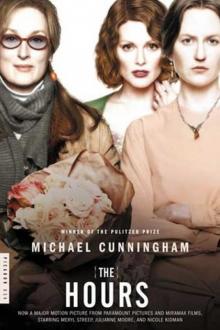 The Hours
The Hours Land's End: A Walk in Provincetown
Land's End: A Walk in Provincetown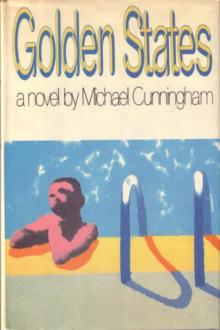 Golden States
Golden States A Wild Swan
A Wild Swan A Home at the End of the World
A Home at the End of the World Flesh and Blood
Flesh and Blood Specimen Days
Specimen Days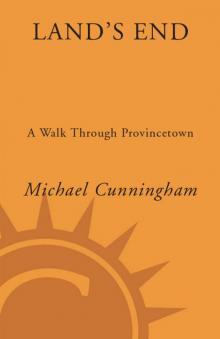 Land's End
Land's End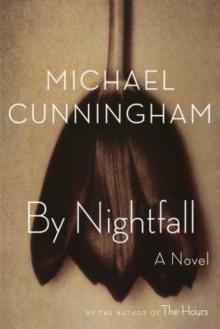 By Nightfall
By Nightfall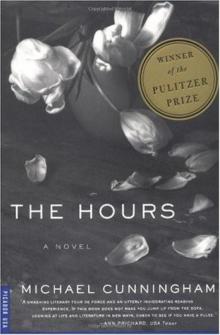 Hours
Hours